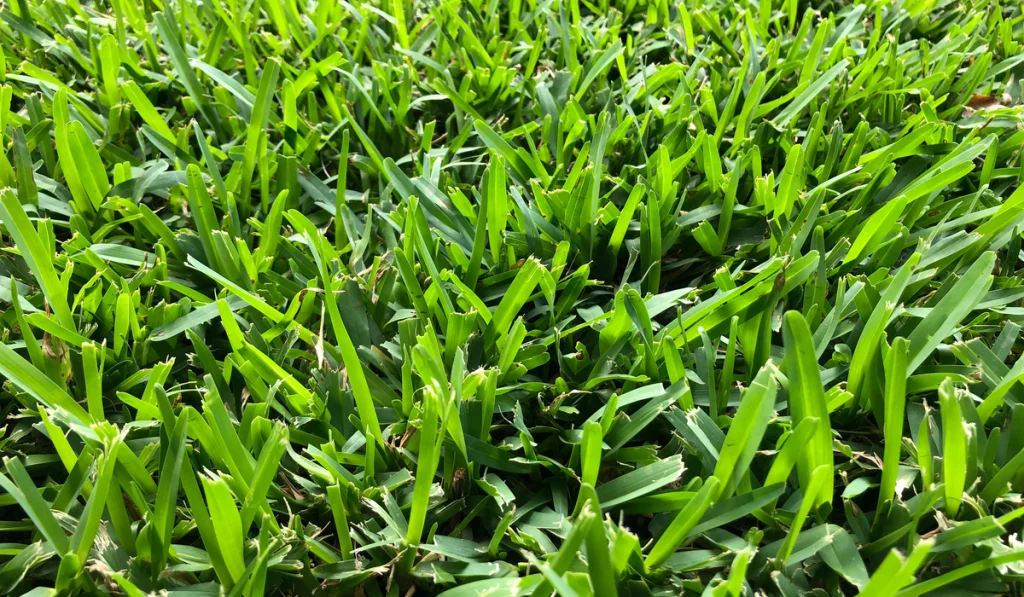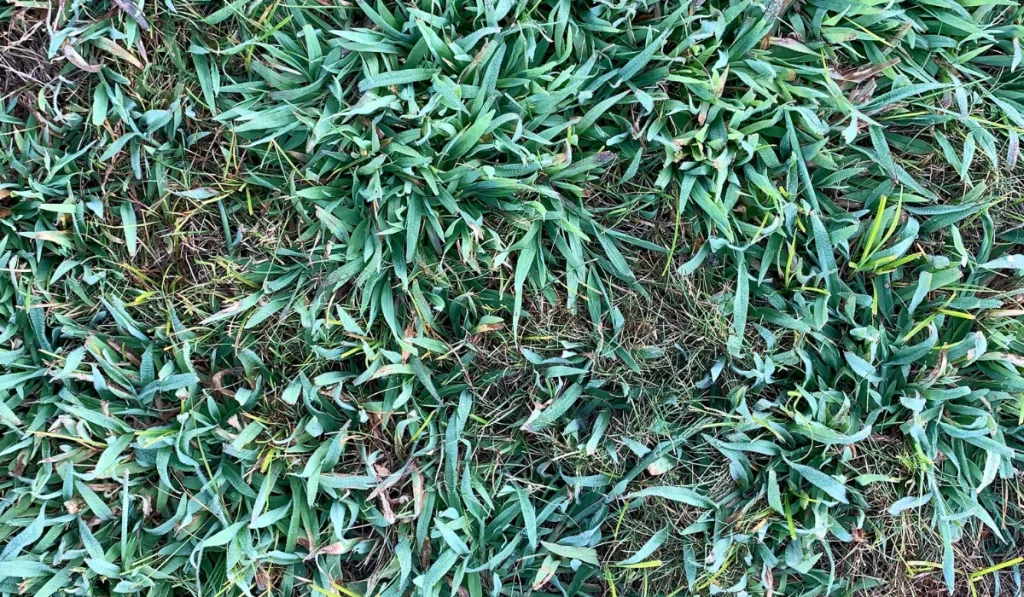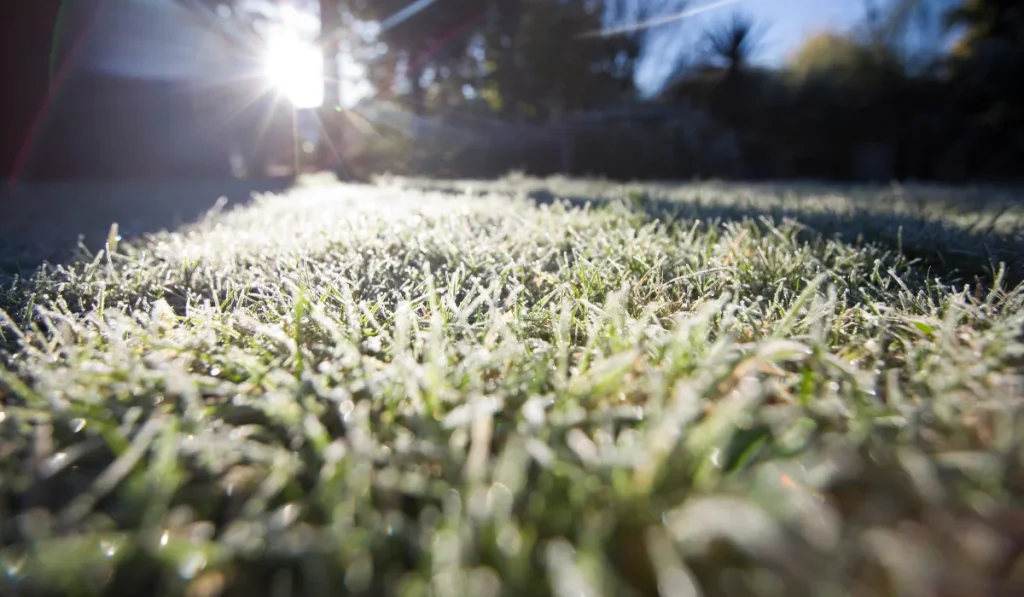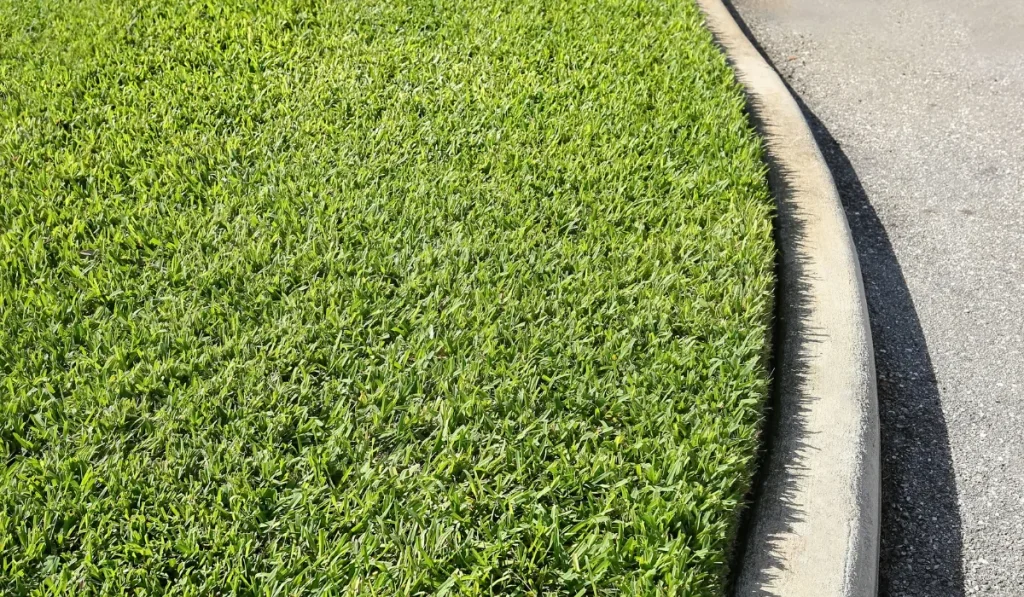Marathon grass vs. St. Augustine – what’s the difference? Both of these popular warm-season lawn grasses have their pros and cons, but one may be a better fit for your yard than the other.
Learn more about the differences between marathon grass and St. Augustine so you can make an informed decision about which type of lawn to install in your home this year!
Key Takeaways
- Marathon grass is the best choice for a shady, wear-resistant lawn as long as it gets 4-6 hours of sunlight.
- St. Augustine grass is ideal for lawns on the coast, as well as those in extremely warm climates.
- Both grass types can be good choices for lawns depending on your sun exposure and intended use.
What is Marathon Grass?
Not all grass is created equal – and out of the many grass types out there, Marathon is one of the most unique.
It’s actually a blend of grass that combines two tall fescues, Baja and Hubbard 87. It’s specifically designed for the tricky Southern California climate, where you’ll find both barren deserts and lush coastal areas.
There are three distinct varieties of Marathon Grass to choose from. These include:
- Original Marathon
- Marathon II
- Marathon III
The Original Marathon grass was praised for its all-purpose use and year-round green color. It’s highly durable and handles wear and tear with ease. Marathon II is equally well-regarded for its beauty and durability but it has a softer feel and a more carpet-like appearance than the original version.
Marathon III is the most refined of all three varieties and is also the most visually appealing.
What is St. Augustine Grass?
St. Augustine grass is a robust perennial that works well for coastal areas. Many people also use it to fill in pasture spaces.
It is prized for its ability to create dense growth – even in just 4-6 hours of sunlight per day..
St. Augustine is most popular in California but can also be found in areas of the Gulf Coast, in Hawaii, Mexico Africa, Australia, South America, and the Caribbean. The warmer the weather gets, the more blue-green in color the grass blades become.
It is hardy in U.S. Department of Agriculture plant hardiness zones 8-10.
All offer similar benefits and tolerate similar growing conditions.
Benefits of Marathon Grass
California – particularly Southern California – is a state with highly diverse climates and environments.
Marathon can handle them all. This hardy, durable grass has the ability to thrive in both dry areas with desert-like weather along with coastal environments that receive more regular precipitation.
It offers a superior feel and texture, along with an attractive appearance. Not only that, but it grows densely, making it easy to fill in bare patches.
Its bright green color is beautiful on any kind of lawn – plus, it’s resistant to disease compared to other cool season turfs.
There are more benefits of each type of Marathon grass outlined in the table below.
| Original Marathon | Marathon II | Marathon III | |
|---|---|---|---|
| Sun Requirements | Full sun to shade | Full sun to partial shade | Full sun |
| Texture | Coarse | Slightly coarse | Soft |
| Mowing Height | 2.5-3.5” | 1.5-3.0” | 1.5” or higher |
| Best For | Families with lawns that receive a lot of daily use as well as shady lawns | Home lawns, athletic fields, parks, and golf courses | Accent areas or lawns that are rarely used (landscape design) |
Benefits of St. Augustine Grass
St. Augustine grass is not picky about soil type. In fact, as long as your soil is well-draining, it should perform quite well. It also does well in the heat.
This is one of the best grass types to consider if you want to grow a lawn in a shady area. Although the Original Marathon grass will also hold up well to shade, this one performs better in full or partial shade than most other grasses that you might be considering. Again, some sun is still essential. This grass needs 4-6 hours of sunlight per day or it will become thin and patchy, like most other types of grass.
Another major benefit of St. Augustine grass does well along the coast, since it has a high tolerance for salt.
You’ll find that St. Augustine grows a dense, lush-looking turf when it’s planted and maintained properly. It grows in a tight enough fashion to allow it to compete with weeds – one of the biggest benefits of growing this type of grass.
What to Consider When Choosing Marathon Grass vs. St. Augustine
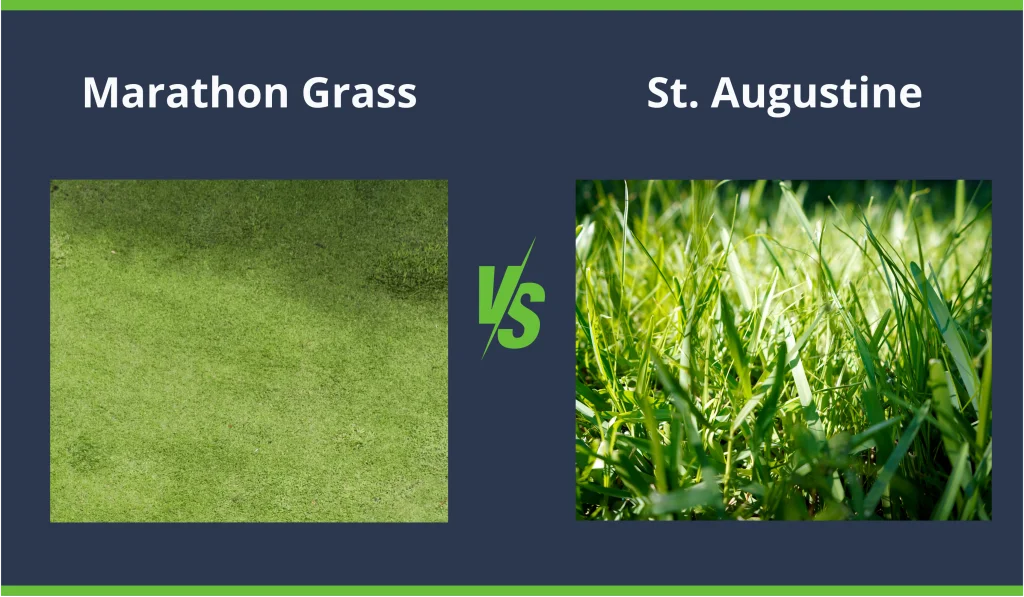
Marathon grass is a relatively tough grass, but if you overseed it with other types of grass – like St. Augustine – you may find that it becomes quickly overtaken.
It tends to be more active in the cold season, which is when you’ll need to weed, feed, and water more often so they have a better chance of surviving summer dormancy.
St. Augustine grass also tends to hold up better to dog urine, meaning it might be a better choice if you have pets. To be clear, dog urine is the kryptonite of any grass and will kill it eventually. When we invent the Superwoman of grasses we’ll be sure to let you know!
Active in the summer and dormant in the winter, the benefit of St. Augustine grass still looks nice even when it’s dormant. It competes well with weeds and with dogs, again, too.
The disadvantage of St. Augustine grass needs slightly more water than Marathon grass. It also is susceptible to chinch bugs – which are fortunately relatively easy to prevent with regular insecticide applications.
Not only that, but Marathon grass (particularly the Original Marathon or Marathon II) might be a better choice if you want to actually use your lawn on a regular basis. Although St. Augustine grass can hold up to a relative amount of foot traffic, there’s a reason why it isn’t used as frequently on golf courses or parks – it just doesn’t thrive if there’s a lot of foot traffic.
Of course, while St. Augustine can grow in shade, it’s important to remember that it prefers some sun – it can look thin and spindly in the shade and needs around four hours of sunlight per day to really do well.
Conclusion
So, what’s the verdict? Marathon grass is a great option for homeowners who are looking for an affordable and low-maintenance lawn. If you have children or pets, this type of grass will also be able to withstand a lot of wear and tear.
However, if you live in a hot climate or want a lush green lawn for longer during the year, St. Augustine may be a better choice for you. Consider these features when choosing the right type of grass for you!
Get the lawn of your dreams today
See which sod varieties are available in your area and get pricing.
See whats available. Get an instant Quote
